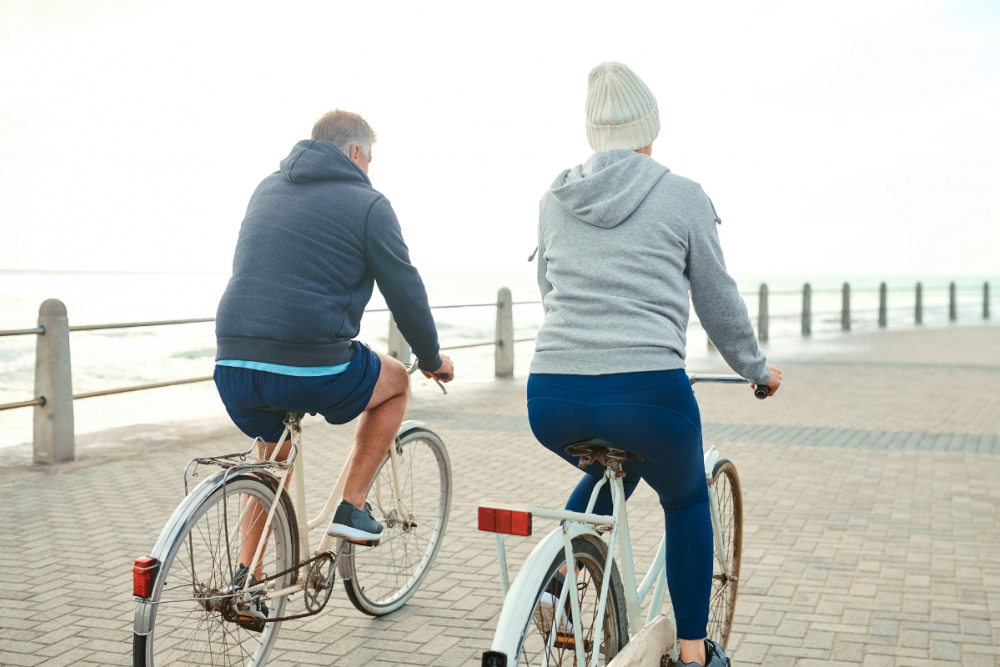
Rest ≠ Rehab
Injuries can be frustrating, painful, and extremely de-motivating. But the good news is, there are ways to not only speed up the recovery process but also get back to exercising at the same time. While some may tell you that you need complete rest to recover, for most injuries this is not necessarily true. Staying active through your recovery can involve It involves low-impact exercises and movements which assist with soreness and stiffness, preventing muscle atrophy, and maintain overall fitness levels, whilst providing the on-going benefits towards our mental health.
Muscle Soreness & Stiffness
When we are injured, our bodies often become stiff and immobile as we try to protect the affected area. This can lead to tightness and discomfort in surrounding muscles. Active recovery exercises, such as gentle stretching, walking, or swimming, can help to increase blood flow to these muscles, bringing much-needed oxygen and nutrients to the area. This can help to reduce soreness and stiffness and improve overall mobility.
Muscle Atrophy
Active recovery can help to prevent muscle atrophy. When we are injured, we may be unable to use certain muscles or perform certain exercises. This can lead to muscle wasting or atrophy, which can further prolong the recovery process. By engaging in low-impact exercises and movements, we can help to maintain muscle strength and in turn prevent atrophy. This can make it easier to get back to our normal routines once we are fully healed.
Fitness Levels
Even though we may not be able to perform our usual high-intensity exercises, we can still engage in low-impact activities that help to keep our bodies moving. This can help to improve our cardiovascular health, build endurance, and maintain muscle tone. By staying active during the recovery process, we can ensure that we are in the best possible shape to return to our sport once we are fully healed.
Mental Health
Maintaining our typical activity ensures a continuation of this routine, therefore preventing the chance of becoming sedentary. This allows the on-going mental health benefit from exercise which promotes the release of endorphins, social interaction and good self-esteem.
The benefit of an active recovery approach for injuries is clear, but how to do you appropriately continue activity whilst injured to ensure that you achieving these benefits and are not doing any further harm?
Adjust the Range of Motion
Often specific ranges of motion are where the affect tissues are under the most load and vulnerable to further damage. Limiting the range of motion to avoid these ranges can be a great way to continue training the same muscle groups under a similar load whilst decreasing the risk for aggravation.
Use Different Variations
Small changes to the exercise you train can alter the load on the affected areas enough to allow for continue training whilst not inhibiting healing. For example, use a front rack instead of a back rack in the squat or hex bar rather than a barbell in the deadlift can keep the torso upright and reduce the amount of load being placed on the low back.
Completely Unloading Affected Tissues
In circumstances when it is best to completely avoid loading the affected tissues to allow for recovery, getting creative with exercises can allow for continued training of other areas that still tolerate some volume. This could mean for someone who is experiencing shoulder issues utilising a belt squat to continue training the legs whilst not putting any pressure on the shoulder.
Decrease Load & Increase Volume
If an area won’t tolerate a heavy load, simply reduce the amount of weight and perform more repetitions in a shorter amount of time. Whilst this may not train our maximal strength, hypertrophy will still occur with a higher range of repetitions when taken to a fatigue level.
Train Unilaterally
Studies have shown that by training the uninjured side this can help to maintain strength and muscle mass on the injured side also. Through the activation of our neurological and hormone systems, unilateral training can continue to benefit the injured, untrained area. Side to side strength deficits are minimal whilst this is performed and can be equalised using the previous strategies as the injured area heals and can be reintroduced to loads.
Active recovery is an important aspect for most injury recoveries. By engaging in low-impact exercises and movements, you should see your mobility improve and soreness decrease, you will help to prevent muscle atrophy and overall, your fitness levels will not decrease as much as they would if you were to rest completely. If you need any further help in implementing active recovery that is appropriate, speak to your health professional for assessment and advice.